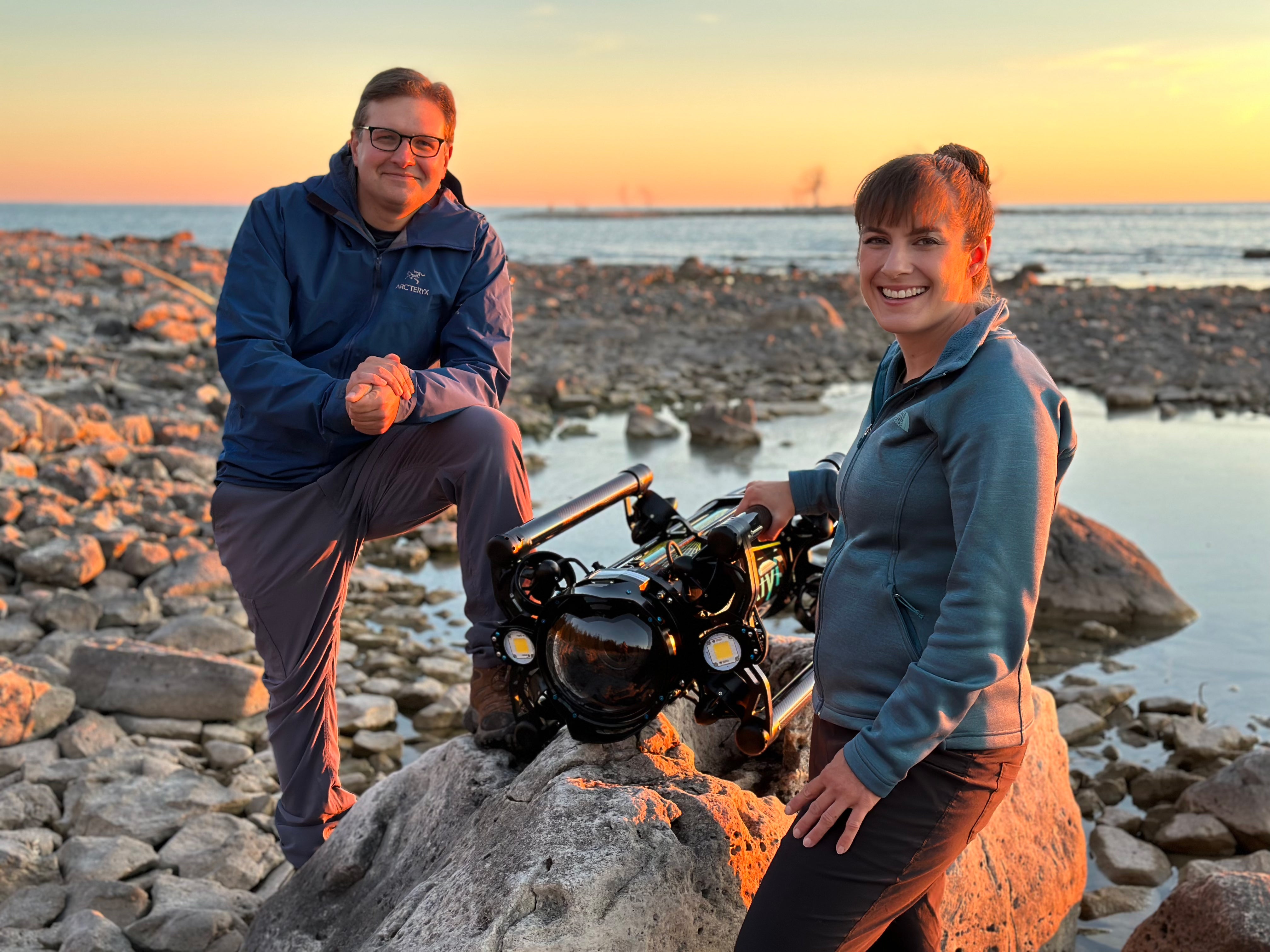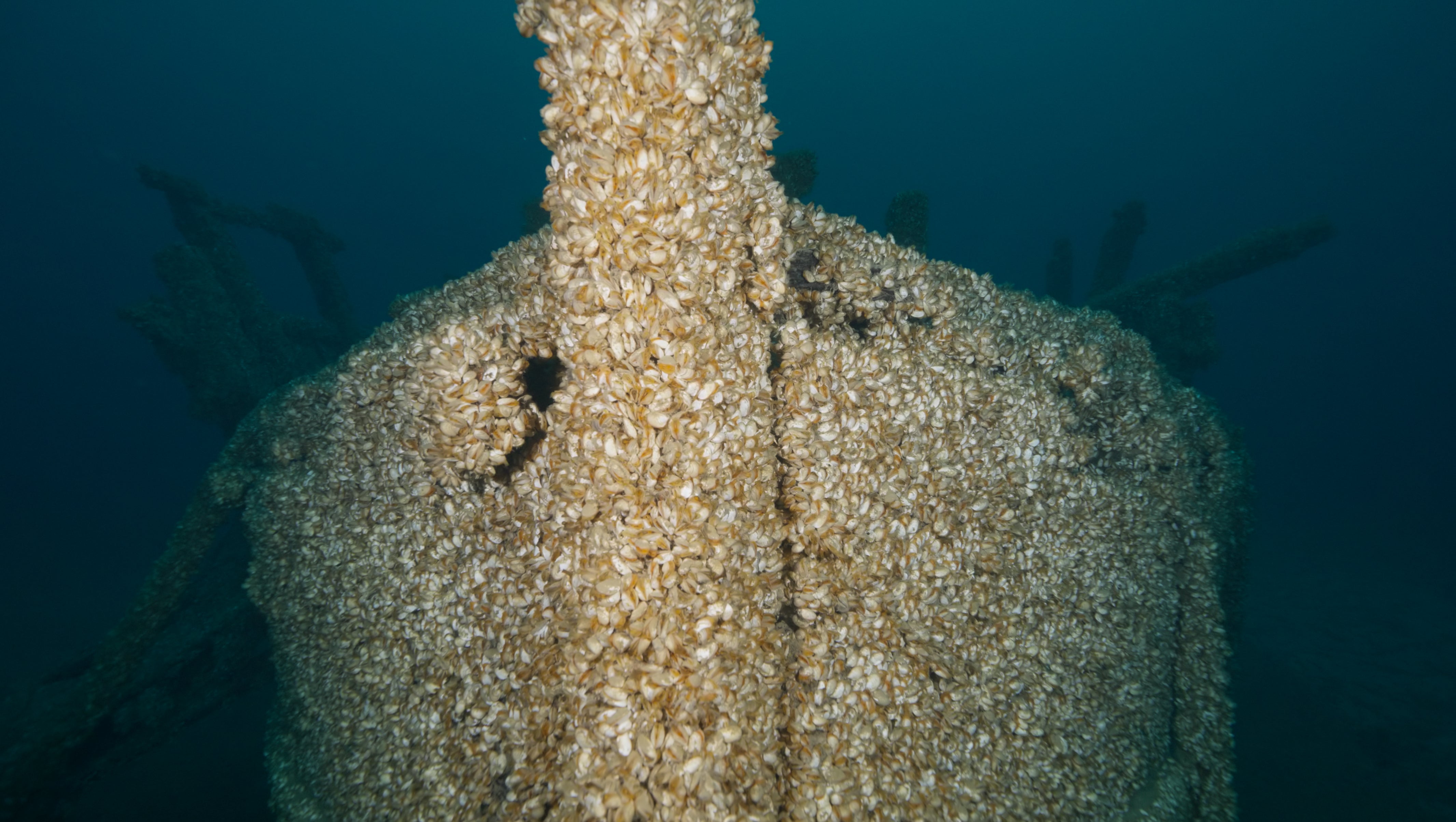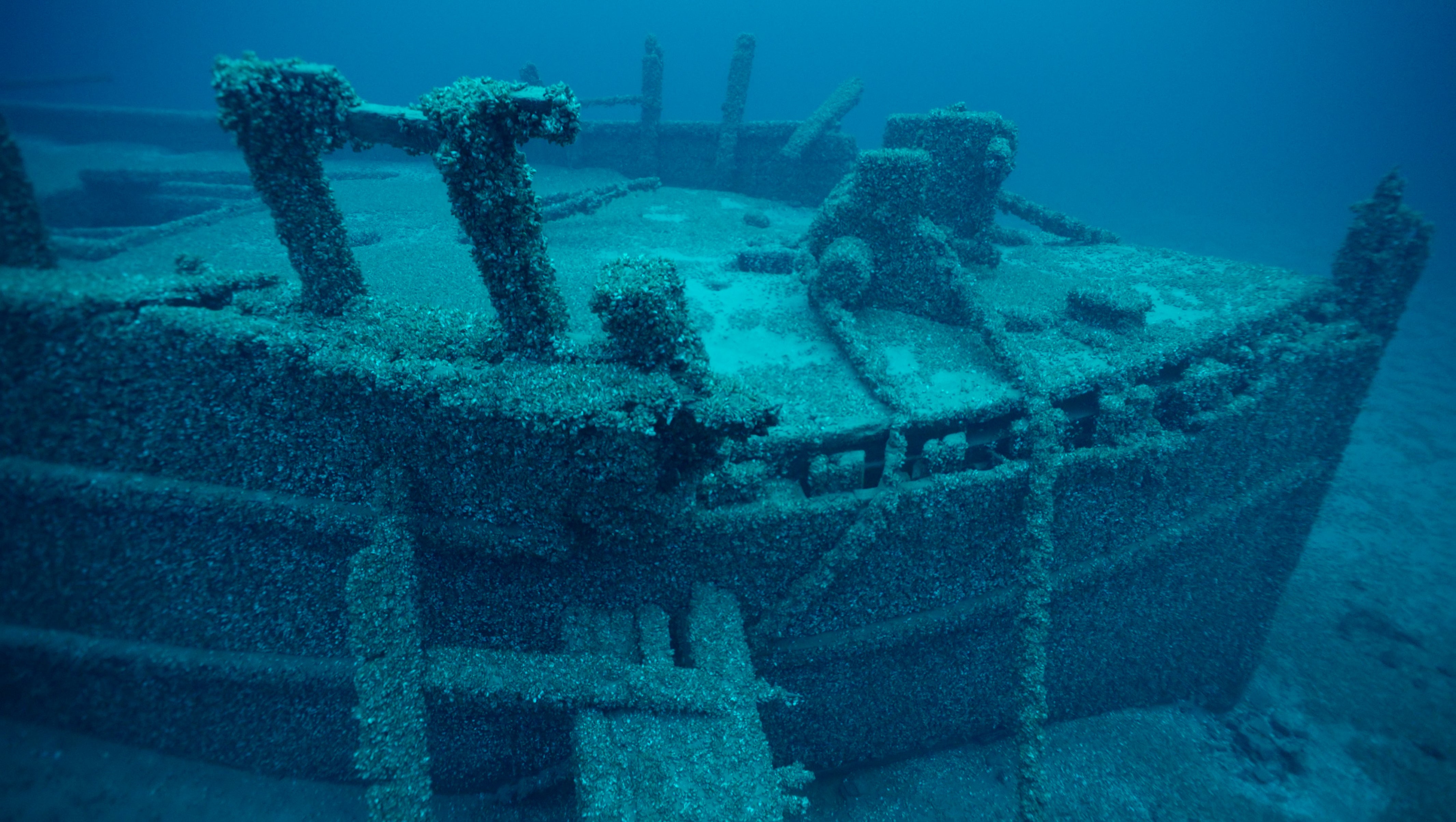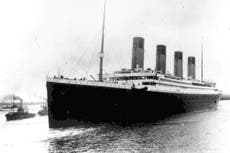Invasive mussels lead to discovery of 128-year-old shipwreck
Husband and wife team, Yvonne Drebert and Zack Melnick, who specialise in underwater videography, were filming a documentary when they made the discovery
A team of documentary filmmakers discovered a long-lost shipwreck — all thanks to thousands of invasive mussels.
Husband-and wife-team, Yvonne Drebert and Zack Melnick, who specialise in underwater videography, were filming a feature-length documentary when they made the discovery.
They found the vessel, named “The Africa”, about 275 feet down on the bed of Lake Huron near the Saugeen-Bruce Peninsula in June.
The sight of a mass of quagga mussels were what caught their attention.
“We received a tip that scientists doing an offshore fish survey had noticed an anomaly on their sonar readout, basically an unusual bump on an otherwise flat lakebed,” Mr Melnick said in a statement.
Ms Drebert didn’t expect to find anything special but thought it would at least be “a fun Saturday boat ride.”
“We honestly expected to find a pile of rocks,” she said.
The film-maker spoke to The Independent about the discovery.
“We spend a lot of time on the water, looking around with our ROV. We’ve come across some pretty amazing underwater landscape and aquatic life, but honestly - nothing can really prepare you for coming upon a shipwreck that no one has laid eyes on in 128 years,” she said.
“The more we began to understand that we’d really stumbled on something extraordinary.”

They used a remotely-operated vehicle (ROV), which carries a high-resolution camera system.
“We were down for only a few minutes when a huge structure loomed up from the depths – it was a shipwreck,” said Mr Melnick. “We couldn’t believe it.”
Yet while the invasive mussels were the trail to the ship’s discovery they are also the reason that the wreck will eventually be destroyed.
The mussels have been attaching themselves to every single wreck in the Great Lakes - an issue that the couple’s documentary, titled All Too Clear, was focused on.
Archaeologists say that the mussels burrow into the wood and build on top of each other until they eventually crush shipwrecks. They also produce acid, which can corrode steel and iron on the ships.

Ms Drebert told The Independent that their documentary took on a new perspective when they realised how invasive mussels were impacting the waters’ history.
“We’d really focused our work on the ecological impact that the invasive quagga mussel has had on the Great Lakes - home to 20 per cent of the world’s freshwater, and hadn’t much considered their impact on cultural heritage, until we found the ‘Africa’.”
Local maritime historian, Patrick Folkes, and marine archaeologist, Scarlett Janusas, researched the ship and said it was most likely The Africa.
The Africa was built in 1873 and subsequently repurposed in 1886 as a steam barge to haul cargo, according to a statement.
On 4 October 1895, The Africa set sail from Ohio with a crew of 11, loaded with coal and bound for Ontario, Canada.
The ship was towing another barge called The Severn but neither reached their destination.

The Severn was discovered broken up on the Bruce Peninsula and the crew was rescued.
The Africa and its crew were never seen again.
That is until Ms Drebert and Mr Melrick used their high-tech underwater camera system in June.
Based on measurements and deposits of coal found on the lakebed, the team have been able to conclude it was the missing Africa.
All Too Clear is set to air in 2024.
Join our commenting forum
Join thought-provoking conversations, follow other Independent readers and see their replies
Comments


Bookmark popover
Removed from bookmarks